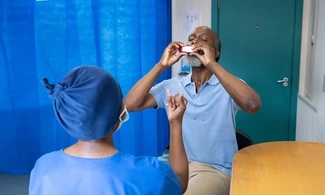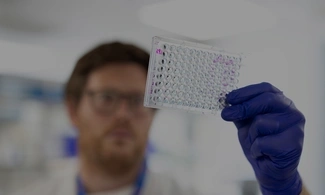Throughout my childhood, I had an absolutely awful chesty cough, I tired very easily, and always had a snotty nose and loads of catarrh. Eventually I was told I had asthma and was given a blue inhaler.
Eventually my symptoms were taken seriously
At the age of 15, I had three episodes of coughing up blood, but each time the doctor told me I had a chest infection and sent me home with antibiotics. It was during one episode, when I was 16, that my mum had to call an ambulance because I had blood pouring from my mouth, that the doctors started to take my symptoms more seriously. I was referred to the Royal Brompton Hospital and the respiratory team there did a series of tests, including a bronchoscopy, where a small tube with a camera was put down my airway to look inside my lungs, blood tests and a CT scan.
An incredibly isolating experience
Eventually I was diagnosed with bronchiectasis caused by lung damage from another lung condition called Primary ciliary dyskinesia (PCD). It turns out the symptoms I'd experienced as a child, including the constant cough and a constant runny nose, was because of undiagnosed PCD, not asthma.
When I was told I had bronchiectasis and PCD, I’d never heard of the conditions. It was an incredibly isolating experience, and I’ve never known of anyone else with bronchiectasis since either. Every time I reveal that I have the illness, people tend to stare blankly back at me.
We need more awareness of these lung conditions
Having these lung conditions can feel embarrassing and stressful for me but I try to remain positive and feel grateful that I have been able to lead a fairly normal life. I feel like there is a lack of awareness with both PCD and bronchiectasis and think it is important that there is further education around diagnosing and managing these lung conditions.










